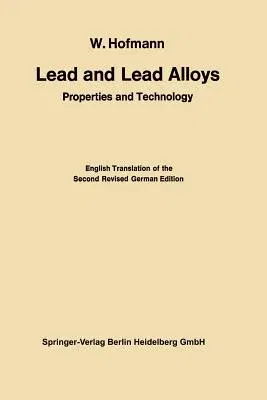Wilhelm Hofmann
(Author)Lead and Lead Alloys: Properties and Technology (Softcover Reprint of the Original 1st 1970)Paperback - Softcover Reprint of the Original 1st 1970, 1 January 1970

Qty
1
Turbo
Ships in 2 - 3 days
In Stock
Free Delivery
Cash on Delivery
15 Days
Free Returns
Secure Checkout
Print Length
551 pages
Language
German
Publisher
Springer
Date Published
1 Jan 1970
ISBN-10
3662270307
ISBN-13
9783662270301
Description
Product Details
Authors:
Book Edition:
Softcover Reprint of the Original 1st 1970
Book Format:
Paperback
Country of Origin:
US
Date Published:
1 January 1970
Dimensions:
23.39 x
15.6 x
2.92 cm
ISBN-10:
3662270307
ISBN-13:
9783662270301
Language:
German
Location:
Berlin, Heidelberg
Pages:
551
Publisher:
Weight:
784.71 gm

